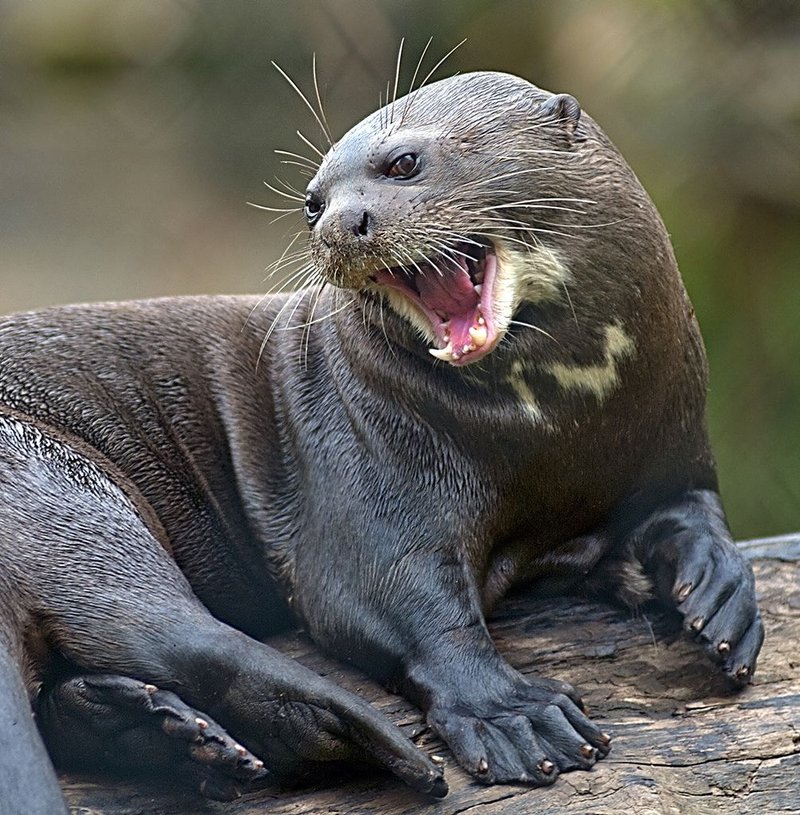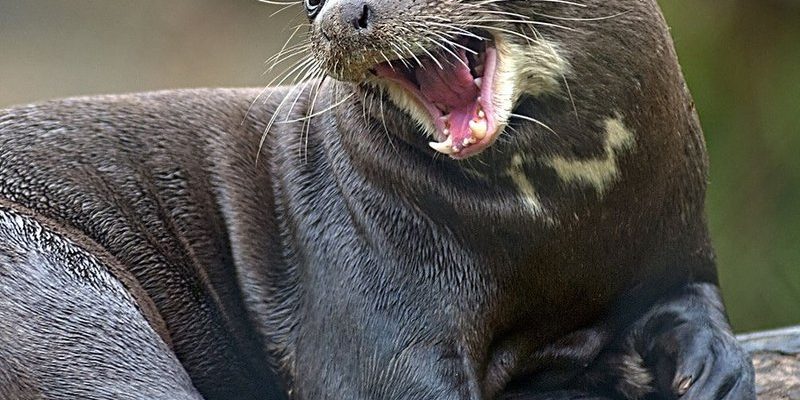
But here’s the thing: despite their charm, giant otters are struggling for survival. Many people might not even realize that these amazing animals are facing serious threats that put their existence at risk. So, you might be wondering, “Is the giant otter endangered?” And the short answer is yes, but let’s dive deeper into the factors impacting their populations and what’s being done to help them.
Understanding the Status of Giant Otters
When we talk about the conservation status of giant otters, we look at data from organizations like the International Union for Conservation of Nature (IUCN). They classify species based on their population size and trends, assessing how close they are to extinction. Currently, giant otters are listed as Endangered on the IUCN Red List, which means they face a high risk of extinction in the wild.
But what does that really mean? Well, it suggests that fewer than 5,000 individuals remain in the wild, and their numbers are dwindling in many areas. Specifically, their populations are declining due to habitat loss, pollution, and hunting. Imagine living in a place where your home is disappearing, and food sources are dwindling. It’s a tough situation for these otters, and they need our help to survive.
Key Threats to Giant Otters
There are several significant threats facing giant otters today. Let’s break them down:
- Habitat Loss: A huge chunk of their habitat has been altered or destroyed due to deforestation and land development. As humans clear forests for agriculture or urban areas, they encroach on the rivers and wetlands that otters depend on.
- Pollution: Rivers can become contaminated with agricultural runoff, mining waste, and plastic. This pollution not only affects the health of the otters but also impacts the fish they rely on for food.
- Hunting and Conflict: In some regions, local communities may view giant otters as competitors for fish, leading to hunting or persecution. They’re often caught in traps meant for other animals, resulting in unintentional deaths.
- Climate Change: Changes in climate patterns can lead to increased flooding or droughts, both of which threaten the delicate balance of their habitats.
Each of these issues presents a challenge that requires targeted conservation efforts to address. We need to remember that giant otters are not just cute animals. They’re part of a complex ecosystem that includes many other species.
Conservation Efforts for Giant Otters
Luckily, there are many passionate individuals and organizations working hard to save giant otters. Conservation projects often focus on:
- Protected Areas: Establishing national parks and reserves helps secure safe habitats for giant otters. These protected areas offer a safe haven from hunting and habitat destruction.
- Community Engagement: Working with local communities is essential. Educational programs teach people about the importance of giant otters and how to coexist with them sustainably.
- Research and Monitoring: Scientists conduct research to better understand giant otter behavior and ecology. Monitoring populations helps assess the effectiveness of conservation efforts over time.
- Restoration Projects: Restoring degraded habitats can help create better living conditions for giant otters and their prey.
These efforts are vital, but they need ongoing support. If everyone could pitch in—whether it’s through donations, advocacy, or simply spreading the word—we could make a real difference.
The Role of Local Communities
Local communities are at the heart of effective conservation. When these communities are involved, the chances of success increase significantly. Here’s why:
1. Knowledge and Experience: Local people often have intimate knowledge of their environment and the animal species living there. This familiarity can guide better conservation strategies.
2. Economic Incentives: When communities see financial benefits from protecting wildlife—such as eco-tourism—they are more likely to engage in conservation efforts.
3. Cultural Importance: For many indigenous groups, giant otters are not just animals; they hold cultural significance and are woven into their stories and traditions. Conserving these animals helps preserve their heritage.
4. Sustainable Practices: By promoting sustainable fishing and agriculture, communities can reduce the pressure on giant otters and their habitats, allowing both wildlife and people to thrive together.
Engaging with local communities ensures that conservation efforts are not only effective but also sustainable in the long run.
International Collaboration and Policy
Conservation isn’t just a local issue; it’s a global one. Giant otters traverse borders, so international collaboration is crucial. Here are some key points about how countries are working together:
– Transboundary Protected Areas: Some regions are establishing protected areas that cross national borders, allowing giant otters to thrive in larger, interconnected habitats.
– Conservation Treaties: Agreements like the Convention on International Trade in Endangered Species (CITES) help regulate the trade of giant otters and their parts, preventing poaching.
– Research Partnerships: Countries can share research and data on giant otter populations, leading to better-informed policies and actions.
– Funding and Resources: International organizations often provide funding and technical support to help countries develop and implement effective conservation strategies.
By working together across borders, we can address the challenges facing giant otters more effectively.
The Future of Giant Otters: What Lies Ahead?
Looking ahead, the future of giant otters hangs in the balance. While there are positive steps being taken, there are also hurdles to overcome. It’s like a tightrope walk—one misstep could mean disaster. But here’s the good news: with continued efforts and public awareness, we can create a brighter future for these magnificent creatures.
You might be wondering how you can help. Even small actions count, like supporting conservation organizations, spreading awareness on social media, or participating in local clean-up efforts. Every little bit helps to create a ripple effect that benefits giant otters and other wildlife.
As we reflect on the state of giant otters, let’s remember their importance to the ecosystem. They’re not just cute faces in documentaries; they’re pivotal players in the health of the rivers and wetlands they inhabit. By standing up for their protection, we’re also advocating for the health of our planet.
In conclusion, while the giant otter may be endangered, there’s still hope. By understanding their plight and taking action, we can help ensure that future generations have the chance to witness these incredible animals in the wild. Let’s work together to make that a reality, for the giant otter and the ecosystems they represent.

